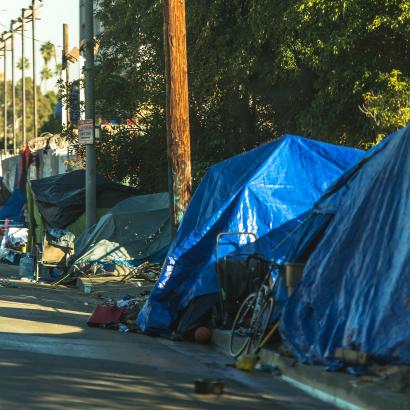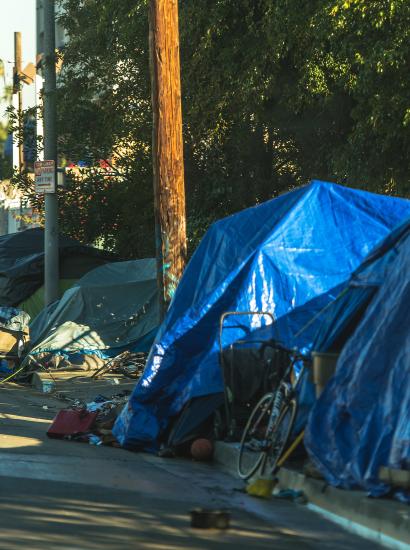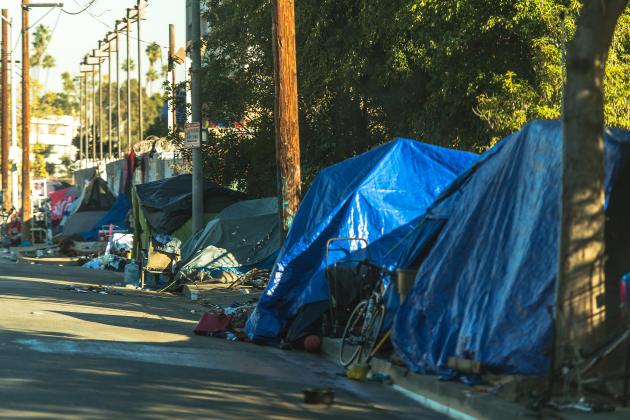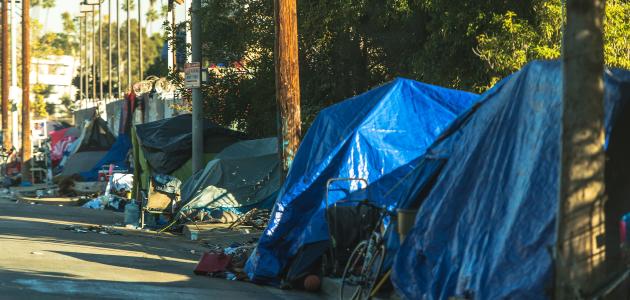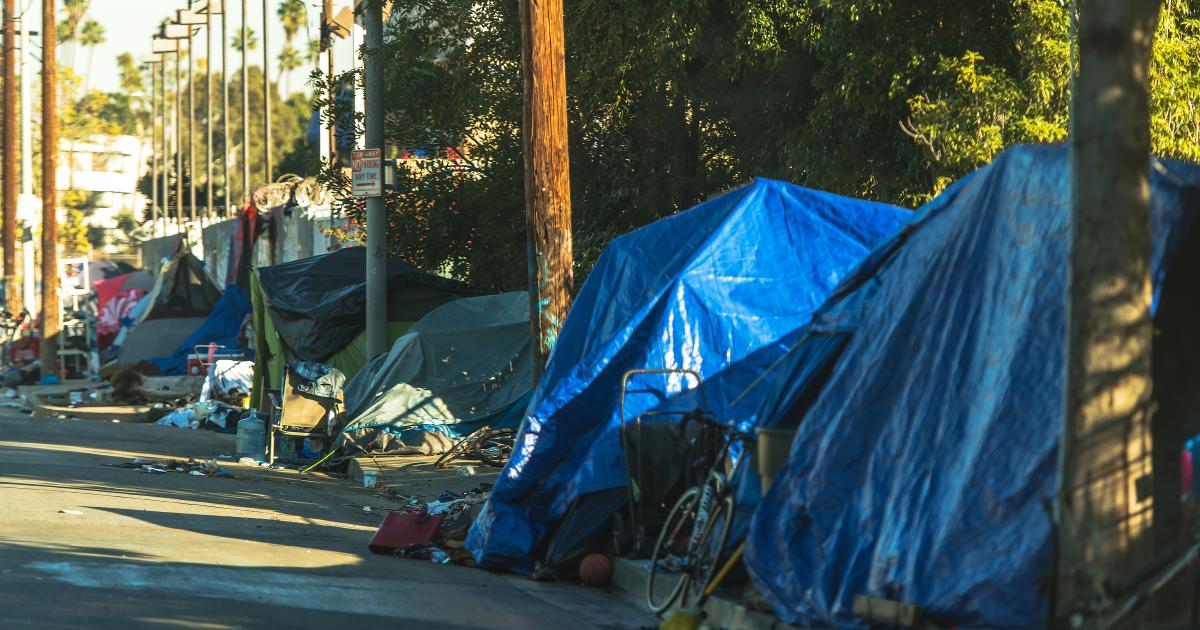- California
With its number of homeless people nearly doubling over the last year, the city of Norwalk, California, enacted a forty-five-day moratorium on the construction of homeless shelters, transitional housing, and permanent supportive housing. When this forty-five-day moratorium expired last week, the city extended it by ten months despite legal threats from Gov. Gavin Newsom and state Attorney General Rob Bonta. Norwalk’s city council approved the extended moratorium unanimously to assess the impact of rising homelessness on the city’s quality of life, safety, and public health.
Norwalk is a relatively poor city, generating less than 60 percent of the tax revenue per resident than its neighbor, Los Angeles. And it spends substantial amounts on its homeless population. Over the last five years, the state has provided nearly $29 million in funding for homeless programs in Norwalk, which works out to roughly $30,000 per homeless person annually. And like nearly everywhere else in California, homelessness has increased.
Norwalk’s conundrum raises the question that is the elephant in the room of California state and local government budgets: Just what do Californians owe the homeless? Here is a simple way of addressing this question, which will clarify why California homelessness continues to grow despite enormous state and local spending.
Consider homelessness as part of the state’s social safety net. A safety net is society’s mechanism of providing insurance to its members against risks that are largely uninsurable from private markets. For example, governments typically don’t offer auto insurance, life insurance, or business insurance, because these are widely available from private insurers. But governments do offer unemployment insurance, because job loss is a significant event that individuals wish to insure against but which is not available privately.
Creating a functional safety net requires choosing which events will be covered and what the budget will be. Importantly, it includes incentivizing individuals so they do not abuse the system. Unemployment insurance does all of this: it is available only to those who lost their job through no fault of their own, it only partially replaces earnings and just for a limited period, and it requires that individuals search for a job while unemployed.
California’s homelessness safety net contrasts sharply with how unemployment insurance is structured. The budget for homelessness is de facto open-ended, as are the events that lead to homelessness and that are expected to be paid for by taxpayers. This open-ended approach was highlighted in Governor Newsom’s 2020 “whatever it takes” State of the State speech:
“We must do everything we can to ensure no Californian is homeless … We will reduce street homelessness quickly and humanely through emergency actions. We will provide stable funding to get sustainable results. And we will do all of this with real accountability and consequences.”
Newsom’s approach, which eschews all functional requirements of a reasonable safety net, is why California’s homelessness continues to rise. Between 2019 and early 2024, the state spent about $24 billion on homelessness, but homelessness rose 23 percent, from about 151,000 in 2019 to about 186,000 in 2024. And with an open-ended budget, with little to no accountability over spending, and by expecting taxpayers to be responsible for housing all who are homeless, there is no way I see California ever succeeding in dealing with this issue.
A huge budget—$24 billion over five years—and no accountability is a bad combination. The numbers speak for themselves. In those five years, the state has spent the equivalent of about $160,000 per homeless person (based on 2019 numbers). And somehow, homelessness worsened. The lack of accountability and failed execution has been egregious. The state auditor summarized the state’s performance as follows:
“(The state) has also not aligned its action plan to end homelessness with its statutory goals to collect financial information and ensure accountability and results. Thus, it lacks assurance that the actions it takes will effectively enable it to achieve those goals. Another significant gap in the State’s ability to assess programs’ effectiveness is that it does not have a consistent method for gathering information on the costs and outcomes for individual programs.”
If you are wondering where the money went, join the club. No one really knows, because standard accounting practices apparently weren’t followed—for five years, in an organization spending about $5 billion per year. And what is particularly striking is that these deficiencies follow an audit that highlighted similar problems just three years ago.
Who is to blame? Newsom was quick to blame local governments, but local government reporting is directed by the state government, and the auditor’s report was highly critical of Newsom’s Interagency Council on Homelessness, which is the department that coordinates these programs—and which was singled out for its ineffective leadership three years earlier.
Another reason why California’s homeless programs fail is the view that taxpayers are implicitly responsible for housing all who are homeless and all who will become homeless in the future. But no reasonable insurance plan covers all possible contingencies. For example, unemployment insurance doesn’t cover job loss if the worker was fired because they didn’t perform their job duties adequately. And while the homeless safety net should cover events such as physical and mental disabilities, it should not cover those who become homeless because they cannot manage their household budget.
For example, about 30 percent of California renters pay 50 percent or more of their pre-tax household income in rent. The standard maximum amount is 30 percent of pre-tax income for rent, which suggests these renters are severely overextended.
With 44 percent of California households renting, and with 13.7 million California households, there are as many as 1.8 million California households on the precipice of being unable to afford housing. Even if just 1 percent of this group loses housing annually, then 18,000 households—approximately 30,000 individuals—will become newly homeless each year.
California’s homeless programs also fail because they follow the principles of harm reduction policies and housing first policies. Harm reduction means that substance abuse should be tolerated by everyone else and that the homeless should not be required or expected to become sober if they have such an issue. Housing first means that California should build permanent housing for the homeless, even if they do have severe substance abuse or mental health issues and are unwilling to receive treatment. If local governments require the homeless to receive treatment, they will lose state funding.
It is noteworthy that the auditor’s report did not study the cost of building new supportive housing for the homeless, which can cost over $1 million per apartment unit. Why do these units cost so much? Again, no one knows. If 50,000 more housing units for the homeless were built at this price point, it would cost about $50 billion. And this wouldn’t even house half of California’s current homeless population.
Viewing homelessness as part of the social safety net means that taxpayers cannot be expected to fund an open-ended set of programs with no sensible budget, with no requirements that those struggling with substance abuse and mental health issues receive treatment, with no accountability, and with a requirement that every contingency resulting in homelessness should be covered. There is simply no sensible conclusion other than that California’s flawed homelessness policies have created an expensive and massive public policy failure.
What should be done? Define a reasonable set of contingencies that will be covered. Require those living on the streets with substance abuse and mental health disorders to receive treatment with the goal of becoming self-sufficient and stable. Provide shelters with treatment in low-cost locations, not $1 million apartment units. And lever the cost efficiencies of manufactured housing, which is built at more than a 50 percent cost savings per square foot over traditionally built homes, and create that housing in areas with low land values. This would substantially reduce the risk of low-income households paying rent beyond their means.
In February 2020, Newsom stated, “The public has lost patience, you have all lost patience, and so have I.” That was over four years ago—before the homeless rolls grew by 35,000 and before the state spent over $20 billion and couldn’t keep track of it. The record is clear. And without a sea change in our homelessness policies, we will see more of the same.








